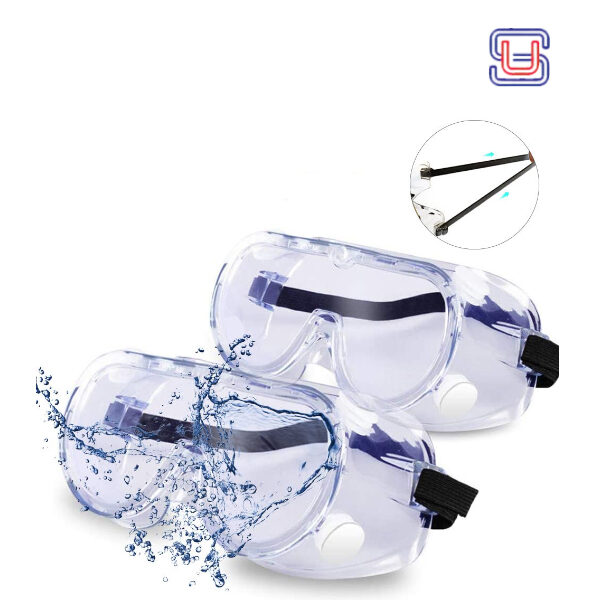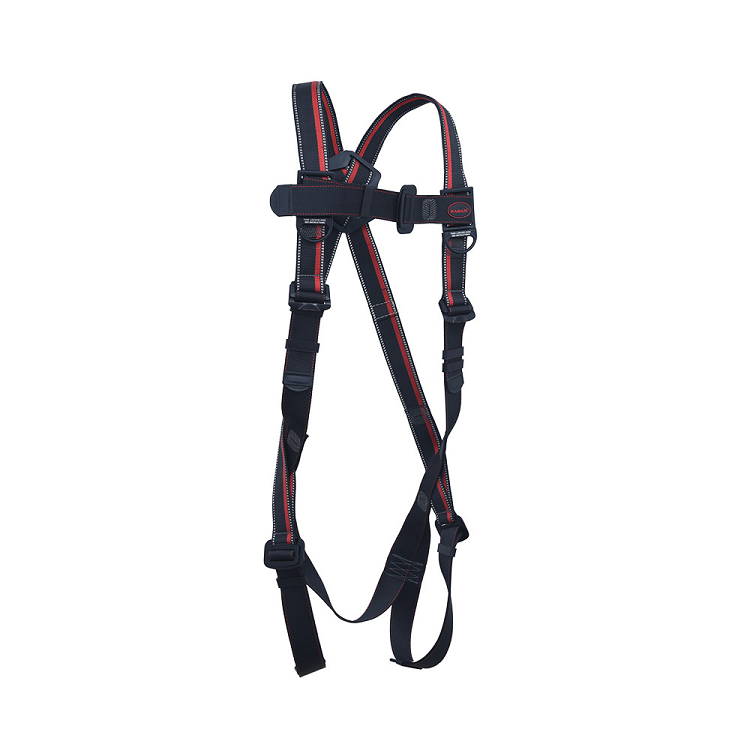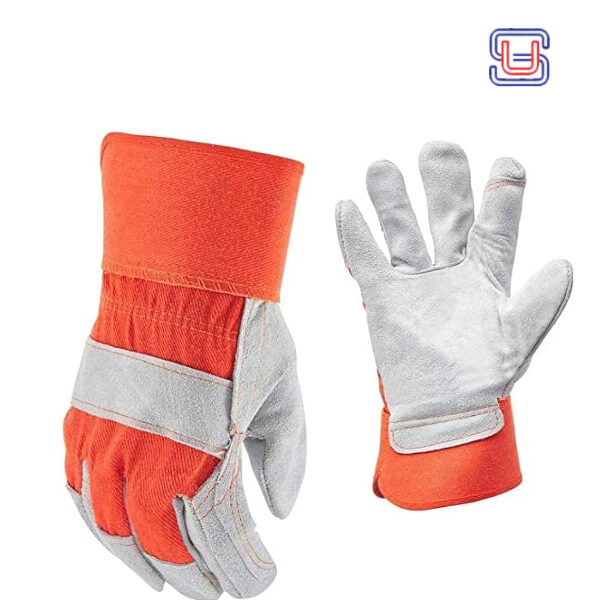(MSK) Personal Protective Equipment (PPE) rules are essential for ensuring the safety and health of workers who are at risk of musculoskeletal injuries. Here are key rules and guidelines for MSK PPE Dubai MSK PPE Dubai MSK PPE Dubai MSK PPE Dubai MSK PPE Dubai MSK PPE Dubai MSK PPE Dubai MSK PPE Dubai MSK PPE Dubai MSK PPE Dubai MSK PPE Dubai MSK PPE Dubai MSK PPE Dubai MSK PPE Dubai MSK PPE Dubai MSK PPE Dubai MSK PPE Dubai MSK PPE Dubai MSK PPE Dubai MSK PPE Dubai
Awareness Programs: Conduct regular awareness programs to educate workers about the importance of using MSK PPE and adhering to safety practices.
5. Maintenance and Inspection
Regular Inspection: Implement a routine inspection schedule to check for wear and tear, damage, and proper functionality of PPE.
Maintenance Protocols: Establish clear maintenance protocols to ensure PPE is kept in good condition, including cleaning and sanitization.Dubai MSK PPE Dubai MSK PPE Dubai MSK PPE Dubai MSK PPE Dubai MSK PPE Dubai MSK PPE Dubai MSK PPE Dubai MSK PPE Dubai MSK PPE Dubai MSK PPE Dubai MSK PPE Dubai Dubai MSK PPE Dubai MSK PPE Dubai MSK PPE Dubai MSK PPE Dubai MSK PPE Dubai MSK PPE Dubai MSK PPE Dubai MSK PPE Dubai MSK PPE Dubai MSK PPE Dubai MSK PPE Dubai
Replacement Policies: Set guidelines for the timely replacement of PPE that is damaged, worn out, or no longer effective.
6. Usage Policies
Mandatory Use: Enforce policies that require the use of MSK PPE in designated high-risk areas or during specific tasks.
Compliance Monitoring: Monitor compliance with PPE usage rules and take corrective actions if necessary.MSK PPE Dubai MSK PPE Dubai MSK PPE Dubai MSK PPE Dubai
Reporting Non-Compliance: Encourage workers to report instances of non-compliance or PPE deficiencies without fear of retaliation.
7. Worker Involvement
Feedback Mechanism: Establish a feedback system for workers to provide input on PPE comfort, fit, and effectiveness.
Participation in Selection: Involve workers in the selection process of MSK PPE to ensure it meets their needs and preferences.
8. Ergonomic Design MSK PPE Dubai MSK PPE Dubai MSK PPE Dubai MSK PPE Dubai MSK PPE DubaiMSK PPE Dubai MSK PPE Dubai MSK PPE Dubai
Supportive Features: Ensure PPE has ergonomic features that support proper body mechanics and reduce strain (e.g., lumbar support in back belts).
Movement Allowance: Design PPE to allow for a full range of motion without restricting necessary movements.
9. Integration with Other Safety Measures
Comprehensive Approach: Integrate the use of MSK PPE with other safety measures, such as ergonomic workplace design and proper lifting techniques.
Holistic Training: Provide training that covers the use of PPE along with other MSK safety practices.
10. Documentation and Record-Keeping
Maintain Records: Keep detailed records of PPE issuance, training, inspections, and maintenance activities. MSK PPE DUBAI MSK PPE DUBAI
MSK PPE DUBAI MSK PPE DUBAIMSK PPE DUBAI MSK PPE DUBAI
MSK PPE DUBAI MSK PPE DUBAIMSK PPE DUBAI MSK PPE DUBAI
MSK PPE DUBAI MSK PPE DUBAI
Incident Tracking: Document any incidents or injuries related to MSK issues and analyze them to improve safety measures and PPE selection.
Conclusion
Implementing and adhering to these MSK PPE rules will help create a safer work environment by effectively mitigating the risk of musculoskeletal injuries. Regular review and updating of these rules, based on feedback and evolving safety standards, will ensure ongoing protection for workers.
MSK PPE DubaiPersonal Protective Equipment (PPE) refers to various types of gear and clothing designed to protect individuals from health and safety hazards, primarily in the workplace but also in other environments where risks are present. PPE is essential for minimizing exposure to a range of potential dangers, including physical, chemical, biological, radiological, and ergonomic hazards. Here's a detailed overview of PPE:
MSK PPE Dubai ollisions, or falls.
Eye and Face Protection: Safety glasses, goggles, face shields, and visors protect against chemical splashes, flying particles, and other hazards.
Hearing Protection: Earplugs and earmuffs protect against harmful noise levels that can cause hearing loss.
Respiratory Protection: Masks, respirators, and breathing apparatus protect against inhaling harmful dust, fumes, vapors, and pathogens.
Hand Protection: Gloves protect against cuts, abrasions, chemicals, and biological agents.
Foot Protection: Safety boots and shoes protect against crush injuries, punctures, slips, and chemical exposure.
Body Protection: Aprons, gowns, coveralls, and suits protect against chemical splashes, heat, and biological hazards.
Fall Protection: Harnesses, lanyards, and lifelines protect against falls from height in construction and other industries.
Skin Protection: Protective creams and barrier creams protect against irritants and chemicals. MSK PPE Dubai MSK PPE Dubai MSK PPE DubaI MSK PPE Dubai MSK PPE Dubai MSK PPE Dubai MSK PPE Dubai MSK PPE Dubai MSK PPE Dubai MSK PPE Dubai
Importance of PPE
Safety and Health: PPE is crucial for protecting workers and individuals from injuries and illnesses. It reduces the risk of accidents and exposure to harmful substances.
Regulatory Compliance: Use of PPE helps businesses comply with occupational health and safety regulations, avoiding legal penalties and ensuring a safe working environment.
Economic Benefits: Preventing workplace injuries and illnesses helps avoid costs associated with medical treatment, compensation, and lost productivity.
Public Health: During pandemics or outbreaks, PPE like masks and gloves are essential for controlling the spread of infectious diseases.
Enhanced Productivity: A safe working environment leads to higher morale and productivity among workers. MSK PPE Dubai MSK PPE Dubai MSK PPE Dubai MSK PPE Dubai MSK PPE Dubai MSK PPE Dubai MSK PPE Dubai VMSK PPE Dubai MSK PPE Dubai MSK PPE Dubai MSK PPE Dubai MSK PPE Dubai MSK PPE Dubai MSK PPE Dubai MSK PPE Dubai MSK PPE Dubai MSK PPE Dubai MSK PPE Dubai MSK PPE Dubai
Selection and Use of PPE
Assessment: Identify the hazards present in the environment and determine the appropriate PPE needed for protection.
Fit and Comfort: PPE must fit properly and be comfortable to ensure it is worn correctly and consistently.
Training: Users must be trained on how to correctly use, maintain, and dispose of PPE.
Maintenance: Regularly inspect and maintain PPE to ensure it remains effective. Replace damaged or worn-out equipment promptly.
Compliance: Ensure that PPE meets relevant safety standards and regulations.
Challenges and Considerations
Proper Use: Ensuring that all workers use PPE correctly and consistently can be challenging.Dubai MSK PPE Dubai MSK PPE Dubai MSK PPE Dubai MSK PPE Dubai MSK PPE Dubai MSK PPE Dubai MSK PPE Dubai MSK PPE Dubai MSK PPE Dubai MSK PPE Dubai MSK PPE Dubai
Supply Chain: Maintaining a steady supply of high-quality PPE is essential, especially during emergencies like pandemics.
Cost: While essential, the cost of PPE can be a significant expense for businesses, necessitating a balance between affordability and quality.
Adaptation: Workers must adapt to using PPE, which can sometimes hinder movement or comfort, affecting productivity.
Conclusion
PPE is a critical component of workplace safety and public health. Its proper use and management are vital for protecting individuals from various hazards, ensuring regulatory compliance, and maintaining economic stability. Organizations and individuals must prioritize the selection, use, and maintenance of PPE to safeguard health and safety effectively.
Dubai MSK PPE Dubai MSK PPE Dubai MSK PPE Dubai MSK PPE Dubai MSK PPE Dubai MSK PPE Dubai MSK PPE Dubai MSK PPE Dubai MSK PPE Dubai MSK PPE Dubai MSK PPE DubaiDubai MSK PPE Dubai MSK PPE Dubai MSK PPE Dubai MSK PPE Dubai MSK PPE Dubai MSK PPE Dubai MSK PPE Dubai MSK PPE Dubai MSK PPE Dubai MSK PPE Dubai MSK PPE Dubai
When considering (MSK) Personal Protective Equipment (PPE) in Dubai, several factors need to be taken into account to ensure effectiveness and compliance with local regulations. Here are the key considerations:
MSK PPE DUBAI MSK PPE DUBAI
MSK PPE DUBAI MSK PPE DUBAIMSK PPE DUBAI MSK PPE DUBAI
MSK PPE DUBAI MSK PPE DUBAI
1. Climate and Environmental Conditions
Heat and Humidity: Dubai’s extreme heat and humidity necessitate PPE that is breathable and minimizes heat retention. Materials should be lightweight and provide adequate ventilation.
UV Protection: Given the high levels of sunlight, PPE should offer UV protection to prevent sunburn and long-term skin damage.
2. Regulatory Compliance
Local and International Standards: Ensure PPE meets the local regulatory requirements as well as international standards (e.g., ISO, ANSI).
Health and Safety Laws: Comply with UAE's labor laws and regulations regarding worker safety and PPE usage.
3. Industry-Specific Requirements
Sector-Specific Needs: Different industries (construction, healthcare, manufacturing) have specific PPE needs. Tailor PPE to the risks associated with each sector.
Ergonomics: MSK PPE should support proper body mechanics and reduce strain to prevent injuries, especially for workers involved in repetitive tasks or heavy lifting.
4. Cultural Considerations
Cultural Sensitivity: PPE should respect cultural norms, such as providing options that can be worn comfortably with traditional clothing..MSK PPE Dubai
Gender-Specific Needs: Consider the fit and design of PPE for both male and female workers to ensure inclusivity and effectiveness.MSK PPE Dubai (MSK Personal Protective Equipment Dubai) is a company or organization based in Dubai, specializing in the provision of personal protective equipment (PPE).
5. Technological Advancements
Smart PPE: Incorporate technology like sensors that monitor posture, movement, and stress levels to provide real-time feedback and prevent MSK injuries.
Material Innovation: Use advanced materials that enhance comfort, durability, and protection.
6. Training and Education
Proper Usage: Conduct regular training sessions on the correct use and maintenance of PPE.
Awareness Programs: Educate workers on the importance of PPE and adherence to safety protocols.
7. Economic Factors
Cost-Effectiveness: Balance between quality and cost to provide durable, effective PPE without exceeding budget constraints.
Supply Chain Reliability: Ensure a consistent supply of PPE by working with reliable suppliers who can meet demand promptly.
8. Maintenance and Hygiene.MSK PPE Dubai .MSK PPE Dubai.MSK PPE Dubai .MSK PPE Dubai .MSK PPE Dubai .MSK PPE Dubai .MSK PPE Dubai .MSK PPE Dubai .MSK PPE Dubai .MSK PPE Dubai .MSK PPE Dubai .MSK PPE Dubai
Cleaning Protocols: Establish guidelines for regular cleaning and maintenance to ensure PPE remains effective and hygienic.MSK PPE DUBAI,MSK PPE IN DUBAI,MSK PPE DUBAI,MSK PPE IN DUBAI,MSK PPE IN DUBAI MSK PPE IN DUBAI
Replacement Policies: Implement policies for timely replacement of worn-out or damaged PPE to maintain safety standards.
Conclusion
Considering these factors will help ensure the selection and implementation of effective MSK PPE in Dubai, enhancing worker safety and productivity. Tailoring PPE solutions to the local environment, regulatory landscape, and specific industry needs will provide the best protection for workers while respecting cultural and economic contexts.Musculoskeletal (MSK) safety measures are essential for preventing injuries and promoting the health and well-being of workers, especially in physically demanding jobs. Here are comprehensive MSK safety measures:MSK PPE DUBAI
1. Ergonomic Assessment and Workstation Design
Workstation Design: Design workstations to fit the worker’s needs, promoting neutral postures and minimizing awkward movements.
Adjustable Equipment: Provide adjustable chairs, desks, and tools to accommodate various body sizes and shapes.
Task Rotation: Implement job rotation to reduce repetitive strain by alternating tasks that use different muscle groups.MSK PPE Dubai MSK PPE Dubai MSK PPE Dubai MSK PPE Dubai MSK PPE Dubai MSK PPE Dubai MSK PPE Dubai MSK PPE Dubai MSK PPE Dubai MSK PPE Dubai MSK PPE Dubai MSK PPE Dubai MSK PPE Dubai
2. Proper Lifting Techniques
Training: Educate workers on proper lifting techniques, such as bending at the knees, keeping the back straight, and holding loads close to the body.
Lifting Aids: Use mechanical aids like hoists, conveyors, and carts to reduce the physical burden on workers.
3. Use of Appropriate Personal Protective Equipment (PPE)
Supportive Gear: Provide lumbar support belts, knee pads, and other MSK-specific PPE to reduce strain and support joints.
Comfortable and Fit-For-Purpose PPE: Ensure PPE is comfortable and suited to the specific tasks and environmental conditions.
4. Workplace Environment
Temperature Control: Maintain a comfortable working temperature to prevent muscle fatigue and heat-related stress.
Adequate Lighting: Ensure work areas are well-lit to reduce eye strain and awkward postures caused by poor visibility.
5. Regular Breaks and Physical Activity
Scheduled Breaks: Implement regular breaks to prevent prolonged static postures and repetitive motion injuries.
Stretching Exercises: Encourage workers to perform stretching and strengthening exercises to maintain flexibility and reduce the risk of injury.
6. Health and Wellness Programs
Fitness Programs: Promote general fitness through on-site gyms, yoga classes, or discounted gym memberships.
Nutritional Guidance: Provide access to nutritional information and healthy eating options to support overall health.
7. Early Reporting and Intervention
Symptom Reporting: Encourage workers to report early signs of MSK discomfort or injury.
Early Intervention Programs: Implement programs to address symptoms early, preventing them from becoming chronic issues.
8. Training and Education
Regular Training: Conduct regular training sessions on ergonomics, safe work practices, and the use of MSK PPE.
Awareness Campaigns: Promote awareness about MSK health through posters, newsletters, and workshops.
9. Workplace Culture
Supportive Environment: Foster a culture where worker health and safety are prioritized, and concerns can be raised without fear of reprisal.
Worker Involvement: Involve workers in safety planning and decision-making processes to ensure measures are practical and effective.
10. Monitoring and Continuous Improvement
Regular Assessments: Conduct regular ergonomic assessments and audits to identify and address potential MSK risks.
Feedback Mechanism: Implement a feedback system where workers can provide input on safety measures and suggest improvements.
Data Analysis: Use injury and incident data to identify trends and develop targeted interventions.
Conclusion
Implementing these MSK safety measures can significantly reduce the risk of injuries and enhance the overall health and productivity of workers. By creating an ergonomic, supportive, and proactive work environment, organizations can protect their workforce from the physical demands of their jobs.PPE SAFETY STANDARDS
ChatGPT
Personal Protective Equipment (PPE) safety standards are established to ensure the effectiveness, reliability, and safety of PPE used in various industries. Here are key international and regional standards and guidelines that govern the design, manufacture, and use of PPE:
1. International Standards
ISO (International Organization for Standardization)
ISO 45001: Occupational health and safety management systems - Requirements with guidance for use. Provides a framework to improve employee safety, reduce workplace risks, and create better, safer working conditions.
ISO 13688: Protective clothing - General requirements. Specifies general performance requirements for ergonomics, innocuousness, size designation, aging, compatibility, and marking of protective clothing.
2. European Standards
CE Marking (Conformité Européenne)
PPE must have CE marking to be sold in the European Economic Area (EEA). This marking signifies that the PPE complies with the essential requirements of health, safety, and environmental protection legislation.
EN Standards
EN 420: General requirements for protective gloves.
EN 388: Protective gloves against mechanical risks.
EN 166: Personal eye-protection standards.
EN 149: Respiratory protective devices - Filtering half masks to protect against particles.
EN 361: Personal protective equipment against falls from a height - Full body harnesses.
3. North American Standards
OSHA (Occupational Safety and Health Administration)
29 CFR 1910 Subpart I: OSHA standards for PPE in general industry, covering requirements for head, eye and face, respiratory, hand, and foot protection.
ANSI (American National Standards Institute)
ANSI/ISEA Z87.1: Standard for eye and face protection devices.
ANSI/ISEA 105: Standard for hand protection classification.
ANSI/ISEA Z89.1: Standard for industrial head protection.
ANSI/ISEA Z41: Standard for protective footwear.
NIOSH (National Institute for Occupational Safety and Health)
NIOSH certifies and approves respiratory protective devices and has established various standards for different types of respirators.
4. Regional and National Standards
British Standards (BS)
BS EN 149: Respiratory protective devices - Filtering half masks to protect against particles - Requirements, testing, marking.
BS 8437: Code of practice for the selection, use, and maintenance of personal fall protection systems and equipment for use in the workplace.
Canadian Standards Association (CSA)
CSA Z94.3: Eye and face protectors.
CSA Z195: Protective footwear.
CSA Z94.1: Industrial protective headwear - Performance, selection, care, and use.
5. Middle Eastern Standards
UAE Ministry of Human Resources and Emiratisation (MOHRE)
The UAE has specific regulations for PPE as part of its occupational health and safety guidelines, including requirements for providing PPE to workers and ensuring its proper use.
Key Components of PPE Standards
Design and Performance Requirements:
Ensures PPE provides adequate protection against specific hazards.
Specifies material strength, durability, and functional performance.
Ergonomics and Comfort:
Ensures PPE is comfortable to wear for extended periods without causing undue strain or discomfort.
Testing and Certification:
Outlines procedures for rigorous testing of PPE to verify compliance with safety standards.
Certification by recognized bodies to ensure reliability.
Labeling and Information:
Requires clear labeling of PPE, including manufacturer information, size, limitations of use, and maintenance instructions.
Maintenance and Inspection:
Specifies guidelines for regular maintenance, inspection, and replacement of PPE to ensure ongoing protection.
Training and Usage:
Emphasizes the need for proper training on the correct use and limitations of PPE.
Conclusion
Adhering to these PPE safety standards ensures that personal protective equipment is effective in protecting workers from occupational hazards. Organizations must stay informed about the relevant standards and continuously update their safety protocols to comply with the latest regulations and best practices.





